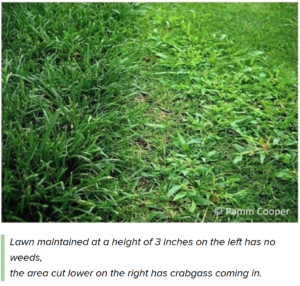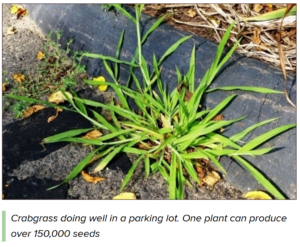
 Crabgrass is one of the most frustrating weeds for homeowners in Northeast Ohio, showing up in thin areas, driveway edges, and heat-stressed spots by mid-summer. By the time you notice it, it’s too late for prevention—this aggressive weed spreads quickly and can overtake your lawn if left unchecked.
Crabgrass is one of the most frustrating weeds for homeowners in Northeast Ohio, showing up in thin areas, driveway edges, and heat-stressed spots by mid-summer. By the time you notice it, it’s too late for prevention—this aggressive weed spreads quickly and can overtake your lawn if left unchecked.
The key to stopping crabgrass before it starts? Early-season protection—sooner than most people expect. A properly timed pre-emergent application in early spring is essential for a lush, green, crabgrass-free summer.
When to Apply Crabgrass Pre-Emergent in Northeast Ohio
Crabgrass begins to germinate when soil temperatures reach 55°F for a few consecutive days, typically in early to mid-spring. To stay ahead of this, we apply the first round of pre-emergent as soon as soil temperatures rise above 32°F, ensuring protection is already in place before germination begins.
At Lawn Doctor, we track soil temperatures using the GreenCast Soil Temperature Tool to determine the perfect timing for applications—so you don’t have to worry about guessing when to start.
Our two-step application process provides season-long control, unlike many one-time treatments that fade too soon:
1️⃣ First Application: A pre-emergent barrier applied in early spring, creating a protective layer in the soil that blocks crabgrass before it sprouts.
2️⃣ Second Application: A combination pre-emergent and post-emergent treatment that catches any late-germinating crabgrass while reinforcing the barrier for extended protection. Many lawn care programs skip this second step, but it’s critical for season-long prevention.
Without this dual-layer approach, crabgrass can sneak into thinning or bare spots or appear along scalped edges where weed whackers trim too low, creating prime conditions for weeds to take hold by mid-summer.
Is It Crabgrass or Something Else?
One of the most common misidentifications we hear from customers is coarse fescue being mistaken for crabgrass—and it happens all season long. A helpful tip:
✔️ Crabgrass dies off in the winter and does not re-emerge until mid-summer. If you see a coarse, clumpy grass in early spring and think it’s crabgrass, it’s likely an undesired cool-season grass like coarse fescue.
✔️ Crabgrass has a sprawling, light-green appearance and spreads aggressively in hot weather. It’s an annual, so it won’t be present in early spring.
If you’re unsure what’s in your lawn, send us a picture—we’re happy to help you identify it!
Act Now for a Crabgrass-Free Summer
The window for effective crabgrass prevention is short, and delaying too long allows weeds to take hold. Applying pre-emergent too late—or skipping the second application—leaves your lawn vulnerable.
With Lawn Doctor’s proactive, two-step crabgrass prevention plan, your lawn gets the best possible protection all season long, reducing weed pressure and keeping your turf thick, green, and healthy.
Want to make sure your lawn is protected? Contact us today to get on the schedule before it’s too late!

